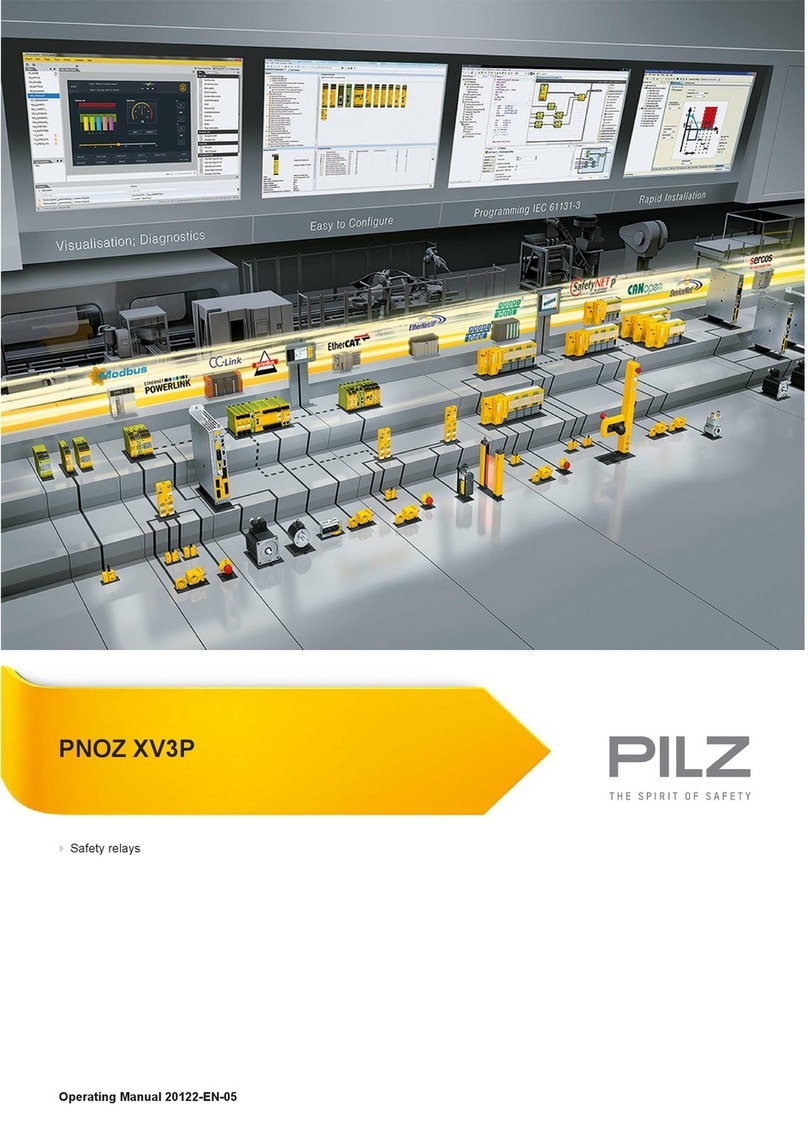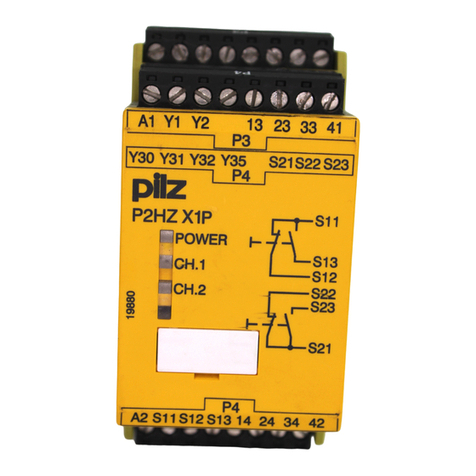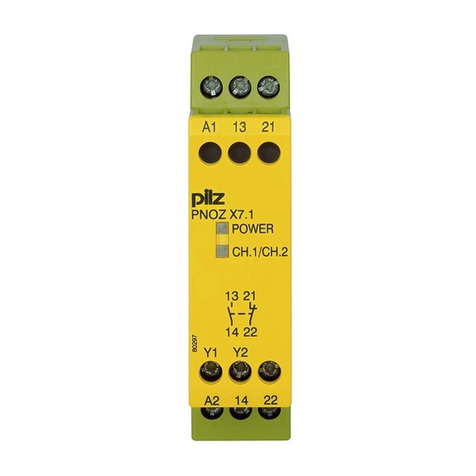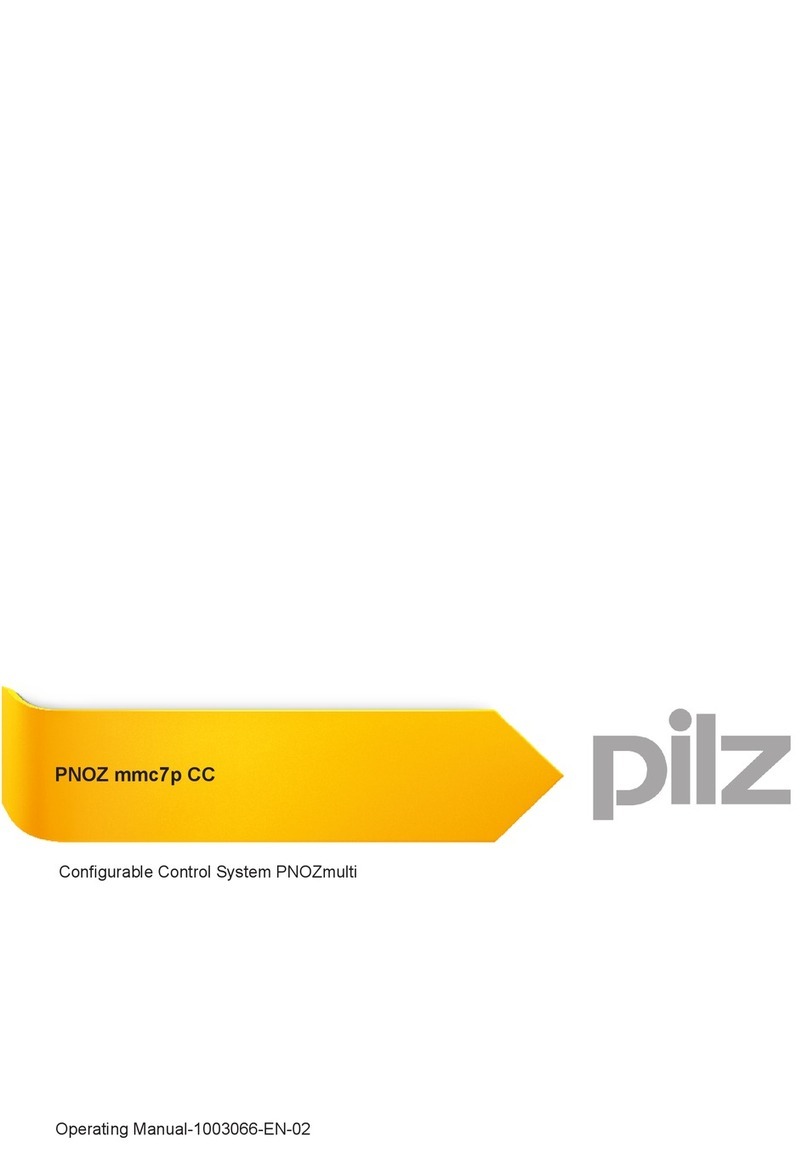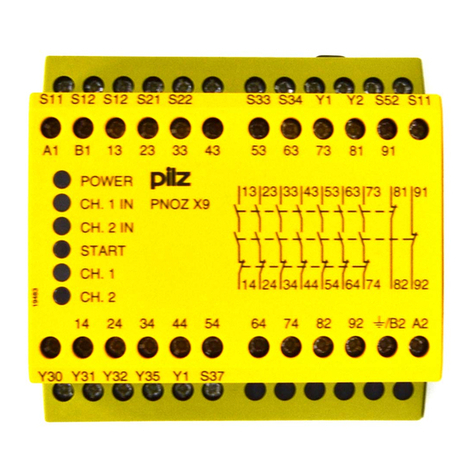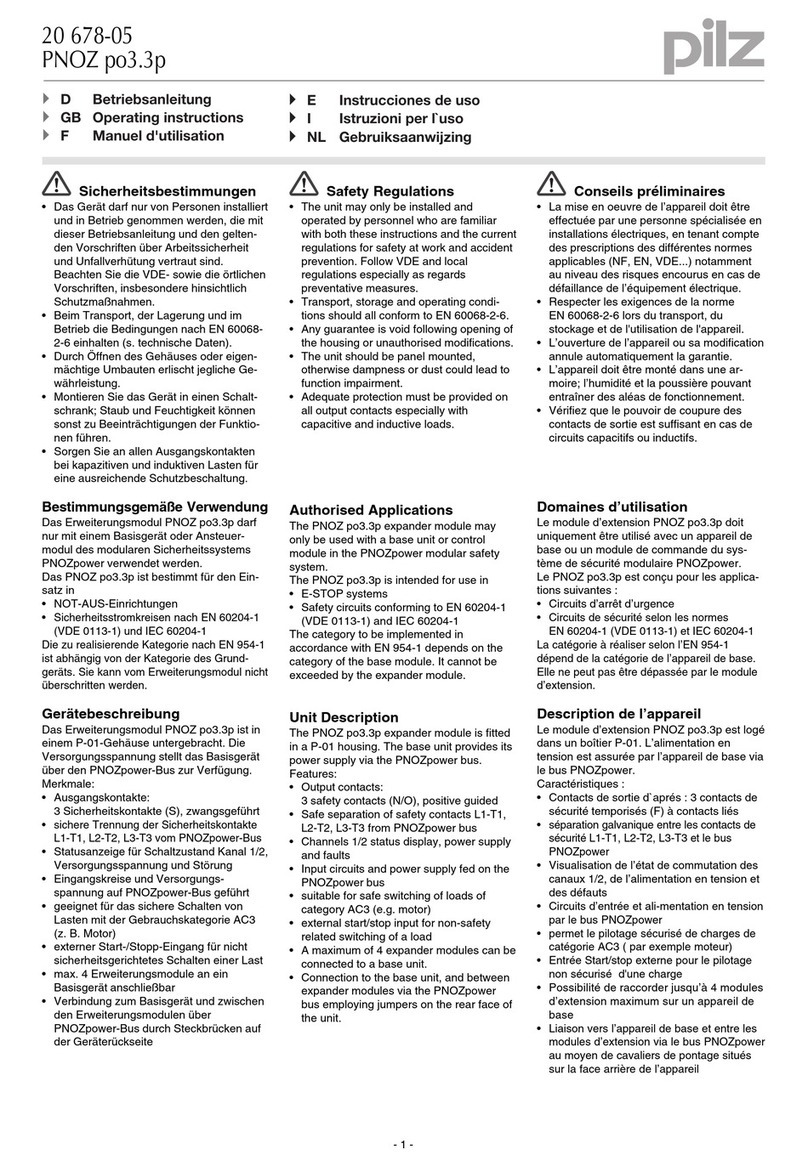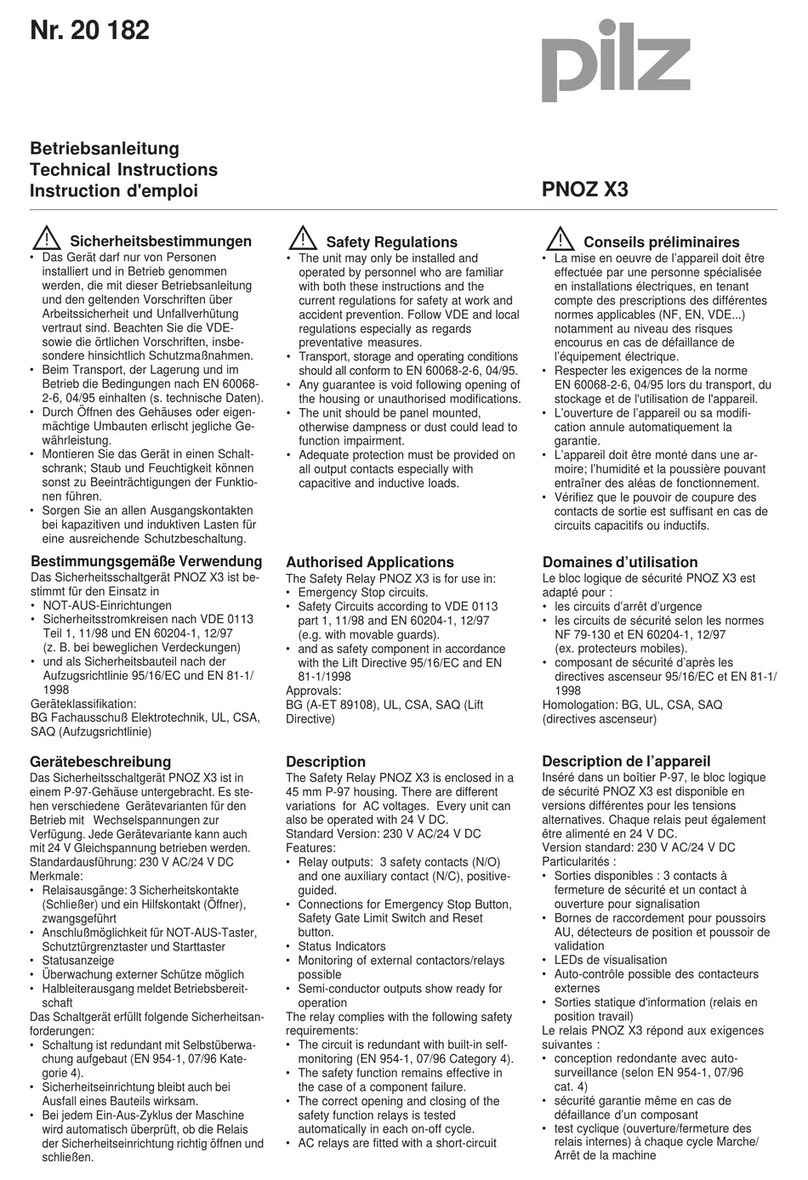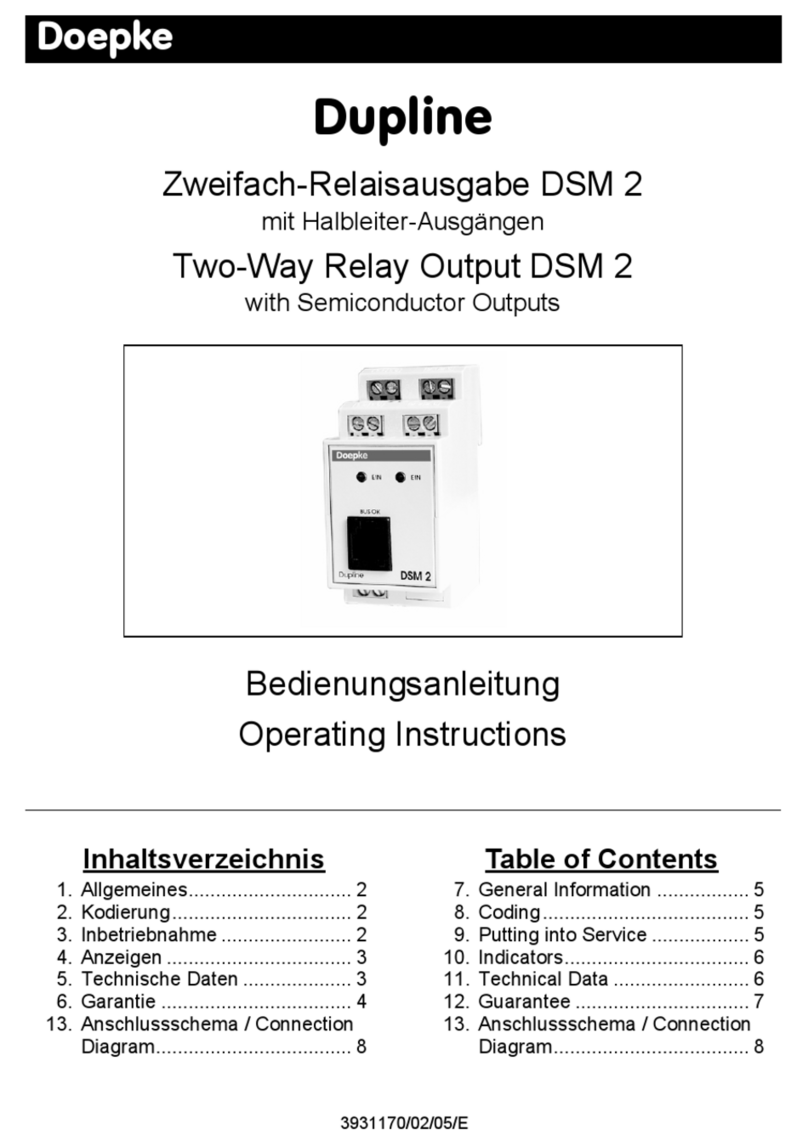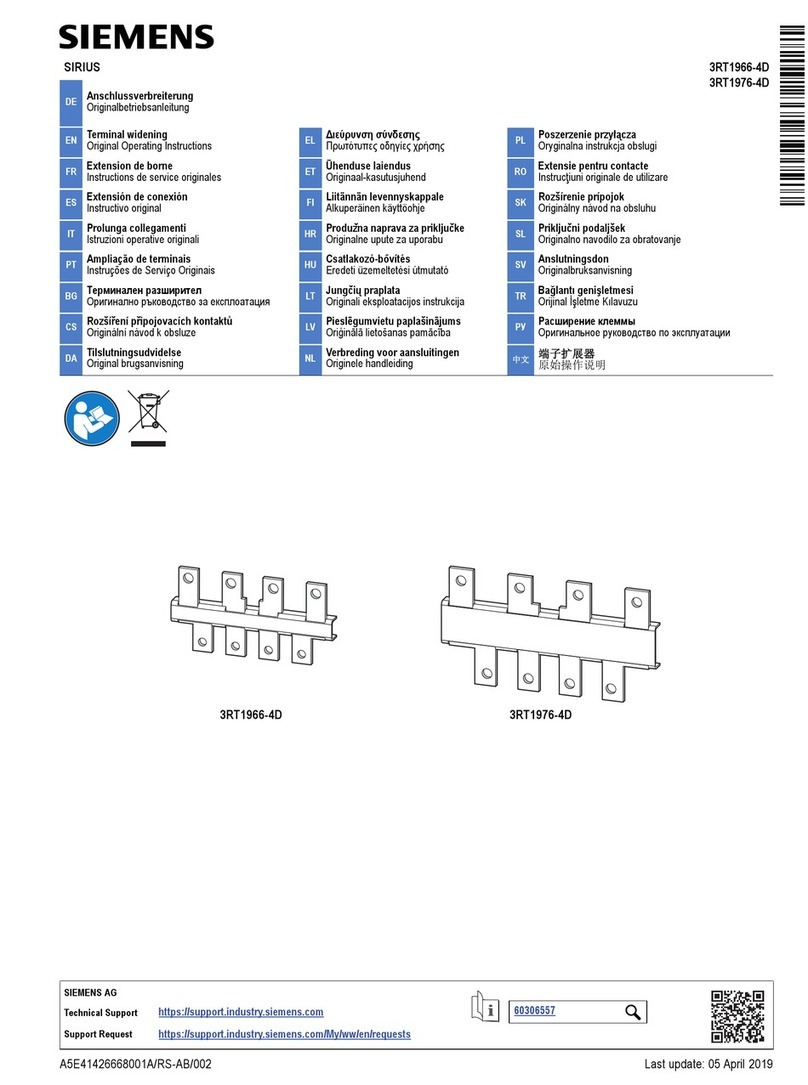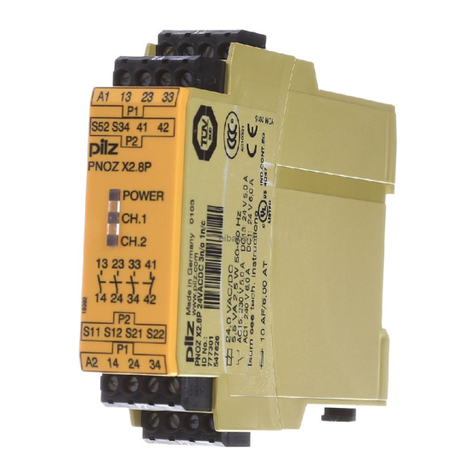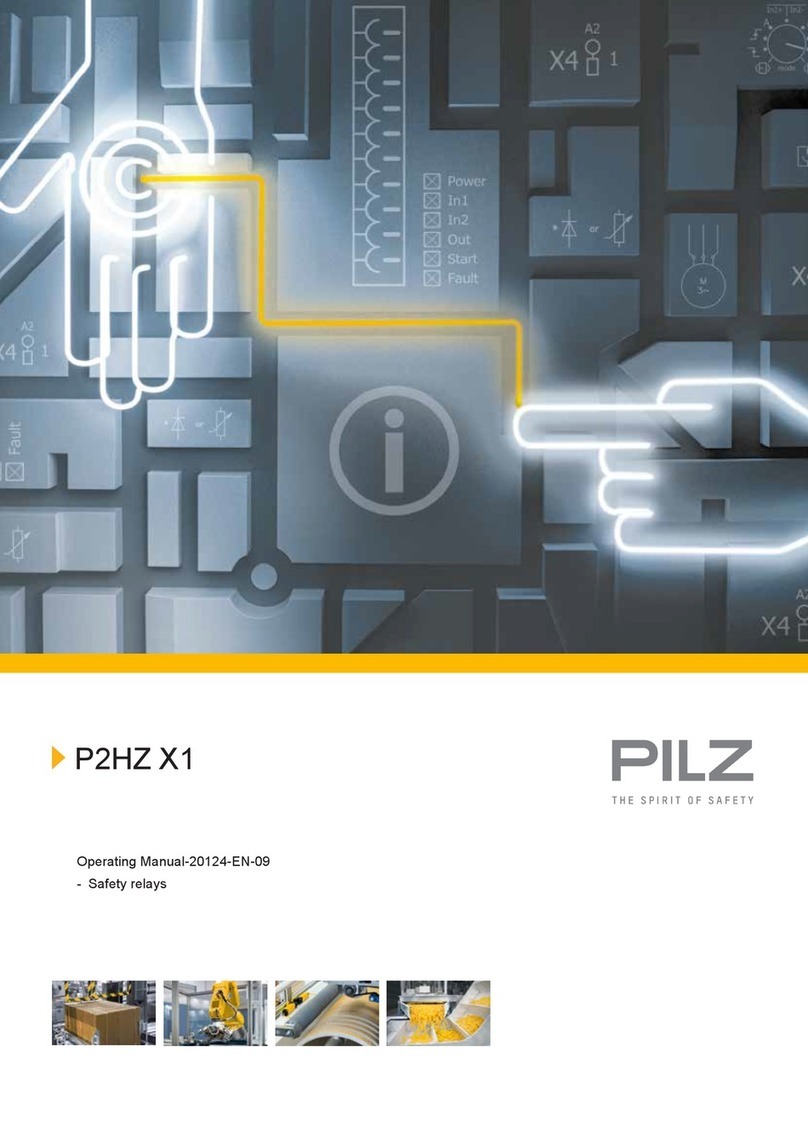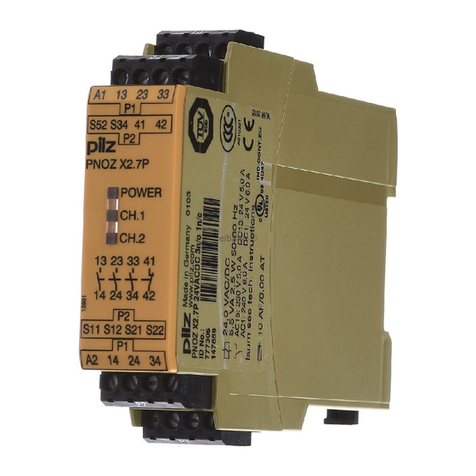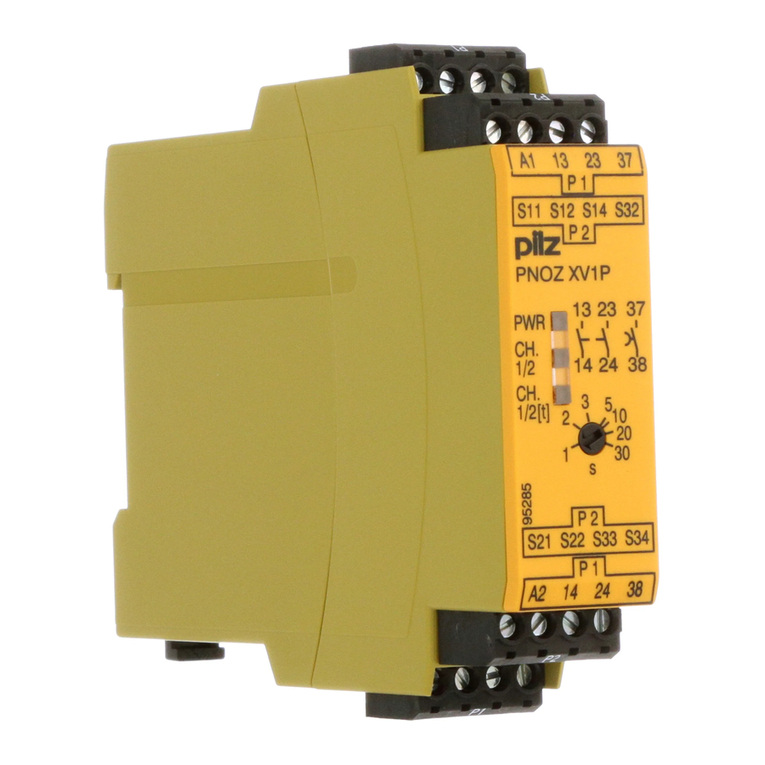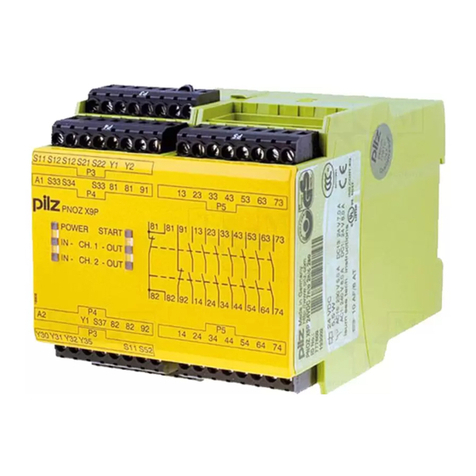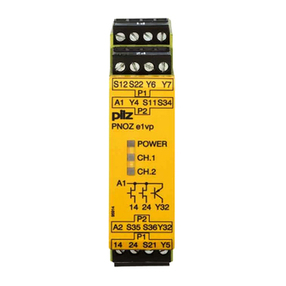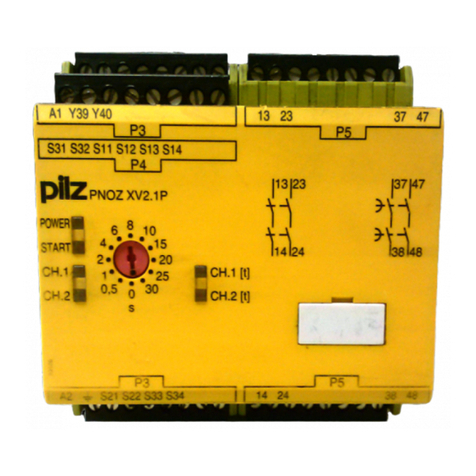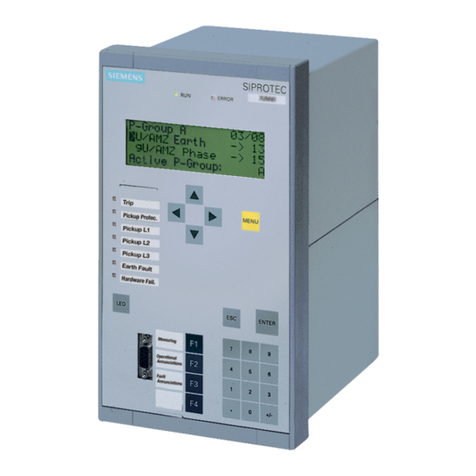
- 1 -
21 362-3FR-03
PNOZ e4.1p
4D Betriebsanleitung
4GB Operating instructions
4F Manuel d'utilisation
Sicherheitsschaltgerät PNOZ e4.1p
Das Sicherheitsschaltgerät PNOZ e4.1p
dient dem sicherheitsgerichteten Unterbre-
chen eines Sicherheitsstromkreises. Das
Gerät erfüllt die Forderungen der EN 954-1
oder EN ISO 13849-1 bis Kategorie 3. Es
darf ausschließlich als Sicherheitssystem
zusammen mit Schaltmatten des Typs
SM/BK nach dem Funktionsprinzip
4-Leiter-Technik (ohne Überwachungs-
widerstand) der Fa. Mayser eingesetzt
werden. Das Sicherheitsschaltgerät dient
dabei nach EN 1760-1 zur Signalver-
arbeitung und als Ausschalteinrichtung.
Wichtige Daten für Projektierung und
Anwendung finden Sie auch im technischen
Katalog PNOZelog.
Safety relay PNOZ e4.1p
The safety relay PNOZ e4.1p is used for the
safety-related interruption of a safety circuit.
The unit meets requirements of EN 954-1 or
EN ISO 13849-1 up to category 3. It may
only be used as a safety system in
conjunction with Mayser SM/BK type
safety mats in accordance with the 4-wire
technology operating principle (without
monitoring resistor). The safety relay is
used for signal processing and as a
shutdown device in accordance with
EN 1760-1.
Important data for project planning and
application can also be found in the
PNOZelog technical catalogue.
Bloc logique de sécurité PNOZ e4.1p
Le bloc logique de sécurité PNOZ e4.1p
sert à interrompre en toute sécurité un
circuit de sécurité. Ce bloc logique satisfait
aux exigences de la norme EN 954-1,
EN ISO 13849-1 jusqu’à la catégorie 3. Il ne
doit être utilisé comme système de sécurité
qu’avec les tapis sensibles de type SM/BK
raccordé selon le principe fonctionnel de
la technique à 4 conducteurs (sans
résistance de surveillance) de la société
Mayser. Le bloc logique de sécurité est
alors utilisé selon la norme EN 1760-1 pour
le traitement des signaux et comme
dispositif de coupure.
Vous trouverez également des données
importantes pour la configuration projet et
l’utilisation dans le Catalogue technique
PNOZelog.
Pour votre sécurité
Le bloc logique de sécurité PNOZ e4.1p
satisfait à toutes les conditions nécessaires
pour un fonctionnement sûr.
Toutefois, vous êtes tenu de respecter les
prescriptions de sécurité suivantes :
• Ne procédez à l’installation et à la mise
en service du système de sécurité que si
vous avez lu et compris cette notice
d’utilisation, le catalogue technique et les
instructions de montage de la société
Mayser. En outre, vous devez être
familiarisé avec les prescriptions en
vigueur concernant la sécurité du travail
et la prévention des accidents.
• N'utilisez l'appareil que conformément à
l'usage auquel il est destiné. À ce sujet
respectez les valeurs indiquées dans les
"Caractéristiques techniques".
• Pour le transport, le stockage et
l'utilisation, respectez les exigences des
normes specifiées (voir „Caractéristiques
techniques“).
• N’ouvrez pas le boîtier et n’effectuez pas
de modifications non autorisées.
• En cas de travaux de maintenance (par
ex. remplacement des contacteurs),
coupez impérativement la tension
d’alimentation ou ouvrez les circuits
d’entrée, sinon un enclenchement inopiné
de l’appareil est possible en cas d’erreur
de câblage.
Respectez impérativement les
avertissements dans les autres paragraphes
du présent manuel d’utilisation. Ces
avertissements sont signalés par des
symboles visuels.
Important : respectez les consignes
de sécurité, sinon la garantie devient
caduque.
For your safety
The PNOZ e4.1p safety relay meets all the
necessary conditions for safe operation.
However, please note the following safety
regulations:
• Do not install and commission the safety
system until you have read and under-
stood these operating instructions, the
technical catalogue and the installation
manual from Mayser. You must also be
familiar with the relevant regulations
concerning health and safety at work and
accident prevention.
• Only use the unit for the purpose for
which it is intended. Please also take note
of the values in the "Technical details"
section.
• Transport, storage and operating
conditions should all conform to the
standards as stated under “Technical
details”.
• Do not open the housing or undertake any
unauthorised modifications.
• Please make sure you shut down the
supply voltage or link the input circuits
when performing maintenance work
(e.g. when replacing contactors),
otherwise the unit might switch on
unexpectedly in the case of a wiring error.
You must take note of the warnings given in
other sections of these operating
instructions. These are highlighted visually
through the use of symbols.
Notice: Failure to keep to these
safety regulations will render the
warranty invalid.
Zu Ihrer Sicherheit
Das Sicherheitsschaltgerät PNOZ e4.1p
erfüllt alle notwendigen Bedingungen für
einen sicheren Betrieb.
Beachten Sie jedoch nachfolgend aufge-
führte Sicherheitsbestimmungen:
• Installieren und nehmen Sie das Sicher-
heitssystem nur dann in Betrieb, wenn
Sie diese Betriebsanleitung, den techni-
schen Katalog und die Montageanleitung
der Fa. Mayser gelesen und verstanden
haben. Sie müssen außerdem mit den
geltenden Vorschriften über Arbeitssi-
cherheit und Unfallverhütung vertraut
sein.
• Verwenden Sie das Gerät nur gemäß
seiner Bestimmung. Beachten Sie dazu
auch die Werte im Abschnitt “Technische
Daten”.
• Halten Sie beim Transport, bei der
Lagerung und im Betrieb die Bedingun-
gen ein, wie sie unter "Technische Daten"
angegeben sind.
• Öffnen Sie nicht das Gehäuse und
nehmen Sie auch keine eigenmächtigen
Umbauten vor.
• Schalten Sie bei Wartungsarbeiten (z. B.
beim Austausch von Schützen) unbedingt
die Versorgungsspannung ab oder
brücken Sie die Eingangskreise, sonst
kann das Gerät bei Verdrahtungsfehlern
unerwartet einschalten.
Beachten Sie unbedingt die Warnhinweise
in den anderen Abschnitten dieser Anlei-
tung. Diese Hinweise sind optisch durch
Symbole hervorgehoben.
Wichtig: Beachten Sie die Sicher-
heitsbestimmungen, sonst erlischt
jegliche Gewährleistung.
